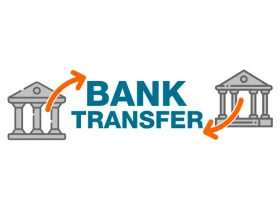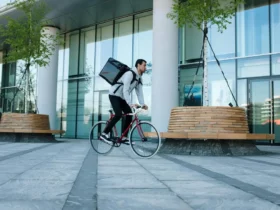Ever found yourself mulling over the idea of becoming a DoorDash driver? I’ve been there, and let me tell you, it’s a gig that’s as tempting as a hot slice of pizza on a cold day. With the promise of flexible hours and the allure of extra cash, it’s no wonder many are drawn to this side hustle.
But let’s not jump into the driver’s seat without buckling up for the full ride. As someone who’s navigated the DoorDash streets, I’ve seen the ups and downs. I’ve also juggled Uber Eats and Grubhub, so I’ve got a pretty good lay of the land. Let’s dive into the nitty-gritty of what it’s really like to deliver with DoorDash.
Introduction to DoorDash
Overview of the DoorDash Service
I’ve noticed how DoorDash has woven itself into the fabric of our daily lives with remarkable ease. It’s fascinating to reflect on how this service started as a mere convenience but quickly evolved into a staple for many. It all begins with the Dasher App—the portal to becoming a Dasher. As soon as I’m signed up, it’s all about choosing shifts, picking orders, and hitting the road. Each order I view details the items, delivery time, directions, and the minimum amount I’ll earn. It’s a straightforward process with no pressure to accept every dispatched delivery, affording me a level of freedom that’s hard to come by in traditional jobs.
Growth and Popularity in the Gig Economy
The gig economy, with DoorDash as a key player, has exploded in popularity. As I observe its trajectory, I’m struck by how DoorDash has capitalized on the crescendo of flexible employment opportunities. People’s yearning for side gigs with adjustable schedules has propelled an app like DoorDash into the limelight. Its business model benefits people like me who value setting their own hours. As I ponder the massive shift towards gig-based employment, it’s clear that convenience and control are the ruling currencies in this modern working world.
Pros of Being a DoorDash Delivery Driver
Flexibility and Control Over Working Hours
DoorDash indeed offers the kind of flexibility that’s hard to find in standard jobs. I’ve noticed that I can practically build my work schedule around my life, not the other way around. Whether it’s family commitments, education, or another job, I can log in and ‘Dash Now’ whenever my day allows. Plus, there’s no stress about being late; as long as I sign in within 30 minutes of my block time, I’m good to go.
Earning Potential and Tips
When it comes to earnings, to say I’m pleasantly surprised would be an understatement. While most people wouldn’t expect delivery driving to pay well, DoorDash breaks the mold. Depending on the area, the average hourly wage is quite decent. Take a look at the numbers:
| Area | Average Hourly Wage |
|---|---|
| US | $14.16 |
| High Demand Areas | Up to $20+ |
occasionally stumble upon various incentive programs that can bump my earnings significantly. Also, there’s the Guaranteed Earnings deal, which promises a fixed amount for completing a certain number of deliveries—a nice safety net, indeed.
Minimal Requirements and Registration Process
Getting set up with DoorDash was a breeze. The requirements were straightforward, and the registration process didn’t have me jumping through hoops. With just a vehicle, a driver’s license, and a clean record, I was on my way to making my first delivery in no time.
Cons of Being a DoorDash Delivery Driver
Financial Uncertainties and Variable Income
I’ve found that one of the bigger challenges of being a DoorDash delivery driver is the financial uncertainty that comes with the gig economy. Although I can theoretically make up to $20 an hour, the average hourly wage is $14.16, and that’s not guaranteed. My earnings fluctuate based on a variety of factors, like local demand, the number of deliveries I can complete, and even the generosity of customers’ tips. It’s a variable income model that requires me to be pretty savvy with my budgeting.
Potential for Lower Earnings Compared to Other Services
While DoorDash provides a chance to earn money, I’ve noticed that sometimes my earnings can be lower compared to other delivery or ride-sharing services. This isn’t always the case, but it’s dependent on market saturation and the competitive landscape in my area. Competition among couriers can be fierce, and if there are more drivers than orders, it could lead to fewer opportunities to earn.
Vehicle Wear and Tear
The wear and tear on my vehicle is definitely a downside to consider. Consistent driving means more frequent maintenance, oil changes, and tire replacements—all of which come out of my pocket since I’m an independent contractor. I have to be mindful of these costs and make sure I’m not inadvertently losing money.
Challenges in Customer Service
No matter how pleasant I am, I’m bound to encounter a difficult customer now and then. Unlike a traditional employee, I don’t always have the support of a customer service team to mediate issues. I need to navigate these situations diplomatically to protect my rating and ensure continued work.
Finding the quickest routes and dealing with incorrect addresses or inaccessible buildings adds an extra layer of stress. I have to be adept at navigation and, sometimes, creative problem-solving when I hit a snag in the delivery process.
Environmental and Safety Concerns
When the weather turns bad, I’m often still on the road. Driving in rain, snow, or ice not only makes my job more difficult but also increases the risk of accidents. Despite the challenges, the deliveries must go on, and I have to factor in these risks.
I don’t always get to choose where I deliver, and sometimes my route takes me through areas that are less safe than others. Delivering in these neighborhoods, especially at night, brings a level of risk that can be daunting, and I must always be aware of my surroundings.
Pros and Cons for DoorDash Customers
Convenience and Ease of Use
I’ve got to admit that convenience is a huge plus for DoorDash users. With just a few taps on a smartphone, you can have a hot meal from a local restaurant delivered straight to your doorstep. This ease of use is a lifesaver for busy days or those moments when cooking just isn’t in the cards. It’s particularly great for me because I’m always juggling multiple tasks. The simple interface of the DoorDash app makes it pretty straightforward – enter your address, pick your meal, and voila, done. Plus, being able to see how many items are in order before accepting is a feature that I appreciate, as it lets you gauge wait times more accurately.
Cost Considerations and Delivery Fees
However, when you’re looking at the cost, things can get a bit pricey. Customers should be prepared for the service fee and delivery fee – on average, around $4.30 and $3.99 respectively. But let’s face it, those numbers can fluctuate. Here’s the breakdown of a typical order cost and where the money goes based on my previous orders and some data:
| Item | Cost ($) |
|---|---|
| Meal Subtotal | 44.00 |
| Service Fee | 4.30 |
| Delivery Fee | 3.99 |
| Taxes | 4.07 |
| Tip (optional) | 9.00 |
| Total | 65.36 |
It’s essential to understand that this isn’t just a one-way street; these fees support various parts of the DoorDash ecosystem, including the hardworking couriers who bring your meals.
Customer Service Experience and Refund Policies
Let’s talk about customer service and refunds. Flipping through user reviews, I noticed that DoorDash seems to stand out for its responsive customer support. And we all know how crucial that can be when our order goes rogue. As for refunds, they’ve been quite reasonable with me when there’s been an issue. If something’s not right with your order, there’s generally a way to get it sorted out, whether that’s a refund or a credit for a future purchase. What’s clear to me is that DoorDash understands the value of a satisfied customer, which is great news for us as users.
The Gig Economy and DoorDash’s Role
Trends in Food Delivery Services
The food delivery sector has been booming, and I’m really into observing how it’s been evolving. I’ve noticed that people’s love for convenience is a crucial driver of this growth. As I dug into the numbers, I found out that a whopping 75% of independent restaurants turned to third-party delivery services in 2022. This dynamic market isn’t just about the ease of getting a meal with a few taps; it’s deeply connected to a larger shift towards on-demand services across industries.
This trend isn’t slowing down anytime soon. With the increasing reliance on technology and the rise of the gig economy, food delivery platforms are innovating rapidly. They’re continually adapting to cater to the changing preferences and expectations of both businesses and consumers.
The flexibility these services provide is invaluable to customers. They offer a variety of food choices without having to step out of their homes or offices. It’s not just meals; these platforms are branching out, delivering groceries, gifts, and more. As a result, food delivery services are transforming from a convenience to a staple in our daily lives.
DoorDash’s Impact on the Labor Market
Now let’s talk about the labor market – it’s fascinating how DoorDash has become a significant player in the gig economy. Being a Dasher is like running your own micro-enterprise; you decide your hours, which orders to accept, and you keep all your tips. This level of autonomy and flexibility has made gig jobs with DoorDash highly attractive.
I get why this gig is popular. Setting your own schedule and choosing orders provide a sense of control that traditional jobs might lack. The ability to balance personal life and work is a benefit that shouldn’t be underestimated. Of course, there are trade-offs, like the need to keep track of income and expenses, but for many, the flexibility outweighs this downside.
With so many people looking to supplement their income, DoorDash has opened doors for side hustlers and has had a pronounced impact on the labor market. It’s empowering individuals economically by providing them the means to earn on their own terms. I’m eager to see how this will evolve further and what it’ll mean for future workforces.
Making an Informed Decision
Deciding whether to join the DoorDash wave isn’t a one-size-fits-all answer. I’ve seen firsthand how it’s reshaped the way we think about food delivery and the opportunities it provides. It’s clear that the gig economy isn’t slowing down, and platforms like DoorDash are at the forefront, offering a unique blend of flexibility and economic empowerment.
Whether you’re looking to make some extra cash or simply enjoy the convenience of having your meals delivered, understanding the nuances of these services is key. So, take what you’ve learned, weigh the pros and cons, and see if DoorDash fits into your lifestyle. After all, it’s all about what works best for you.
FAQ – Frequently Asked Questions
Can Dashers make a full-time income with DoorDash?
While some Dashers do work full-time hours, earnings can vary greatly depending on the time of day, demand, location, and individual effort. It’s often used as a supplemental income source.
Does DoorDash offer any benefits to regular customers?
Regular customers may benefit from the DoorDash subscription service, DashPass, which offers reduced service fees and free delivery on orders over a certain amount from eligible restaurants.













